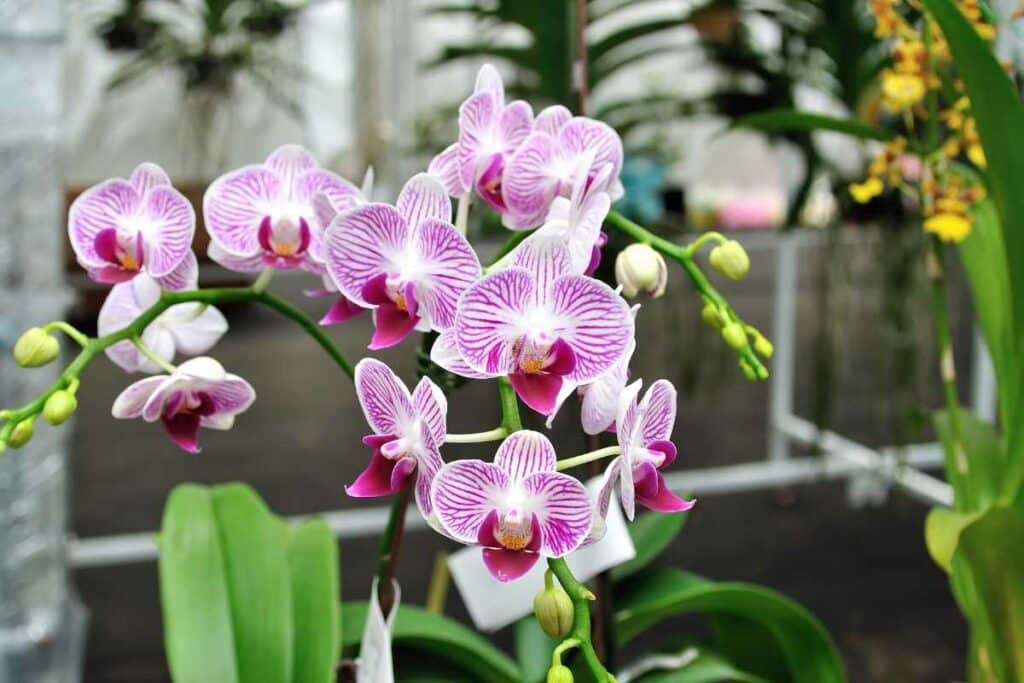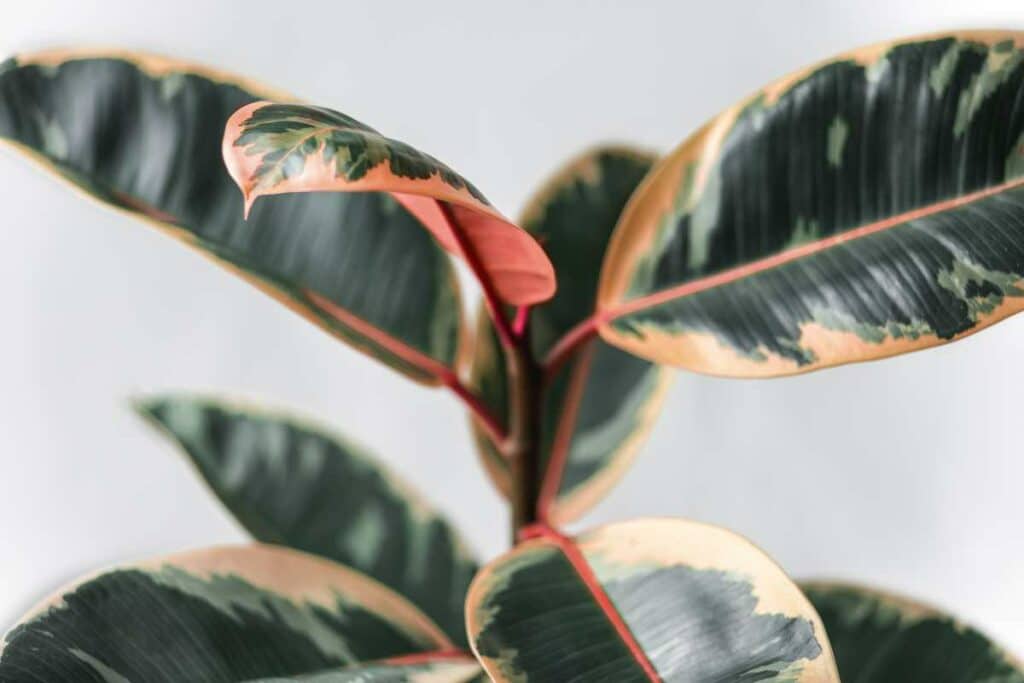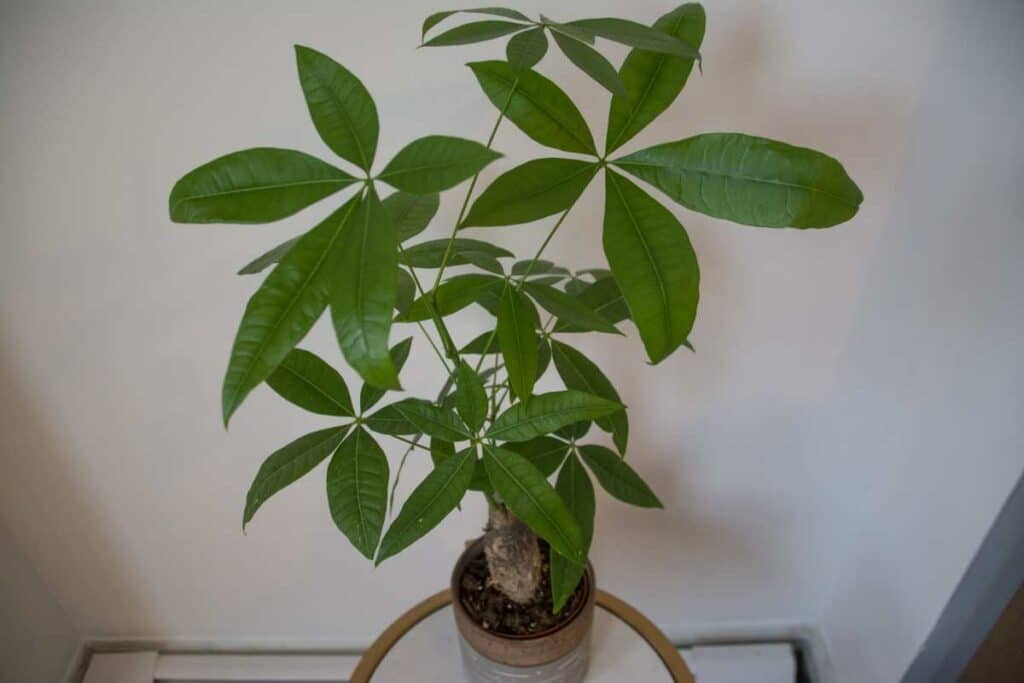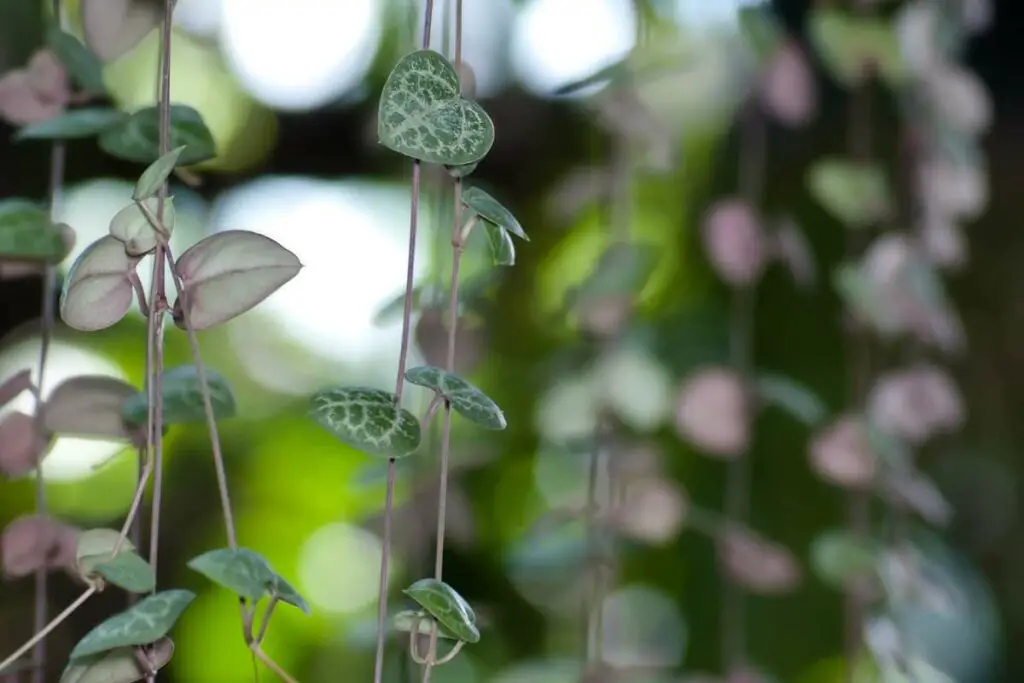Orchids are popular houseplants both because they are attractive plants and because they are easy to grow.
Nevertheless, you can still have problems with your orchids, and one of those problems is yellowing leaves with or without brown spots.
When orchid leaves have spots on them, it usually indicates a bacterial or fungal infection, but thankfully it is easy to remedy.
When there’s a problem with orchid leaves turning yellow with brown spots, it can be either a fungal infection or too much water.
Overwatering is the main reason why most people’s orchid leaves turn yellow and start drooping. What happens is that the roots get flooded in water, which cuts off their air supply. Because of this, they don’t receive the nutrients or water they need to survive. The leaves will then turn yellow and lose their elasticity, but all you do is transplant the orchid and stop overwatering it. In most cases, this takes care of the problem.
Possibilities When Orchid Leaves Turn Yellow
In many cases when your orchid leaves turn yellow, it is simply part of the circle of life, so to speak.

It doesn’t necessarily mean that anything is wrong with your plants.
If your leaves turn yellow, wait and see if they start falling off of the plant. If this happens, it means new leaves or even a new flower spike is right around the corner.
In other words, yellowing leaves that fall off naturally are normal; yellowing leaves that stay on the plant are not.
We mentioned earlier that if the leaves are yellow but have brown spots on them, it could mean either fungal leaf spot disease or bacterial brown spot disease.
Let’s take a look at each of them in more detail.
Fungal Leaf Spot on Orchid Leaves
With fungal leaf spot, the yellowing usually starts at the bottom and underside of the leaves.
If it takes you too long to notice the problem and nothing is done about it, the spots on the leaves enlarge and turn to either brown or black.
When you want to get rid of it, you can start by either:
- wiping
- or spraying the leaves with some type of fungicide
Ideally, you will want to remove all of the leaves that are severely infected and treat the other leaves first.
The thing about fungal leaf spot is that both indoor and outdoor plants can suffer with it.
It occurs when fungal spores in the air locate a wet, warm surface that they’ll then adhere to and won’t let go. The spore soon gets comfortable living there and reproduces.
Before you know it, these tiny brown fungal leaf spots start growing. After that, the spots can touch other spots and therefore, they become a huge blotch.
When this happens, it’s only a matter of time before the leaves turn brown and fall off of the plant.
That being said, if they fall onto the soil, the spores will simply wait for another wet, warm surface to appear so they can start the process over again.
This is why it is so important to remove these leaves as soon as you can.
You certainly don’t want to exacerbate the problem by leaving the leaves there to find other ways to grow and reproduce.
Good Idea: Take them out of the pot so that no more problems occur.
Bacterial Brown Spot on Orchid leaves
With bacterial brown spot disease, the leaves have either yellow or brown spots that look “wet” and damp.
This is not all that uncommon for people who live in areas where it gets hot and humid much of the year.
Once it gets worse, the yellow on the leaves will get worse, and this means that the plant is under stress.
The remedy for this is simple:
- First, remove all of the infected parts of the leaves. Remove the entire leaf if it is all infected. And by the way, you should always use sterile scissors when you do this.
- After all of the infected leaves are removed, spray either a fungicide or bacterial spray (broad spectrum) on the leaves so that no more infections will occur.
You may also notice an unpleasant odor along with your discolored leaves, and this tells you that it’s a bacterial infection as opposed to a fungal infection.
These brown or soft spots often appear in areas that are hot and humid, just like fungal leaf spot disease.
Bacterial brown spot usually starts on the leaf and eventually turns brown.
Also known as Erwinia, bacterial brown spot disease causes the brown spot to eventually exude a dark liquid, which is the source of the foul smell.
This is why the spots look wet and damp on the surface of the leaf.
Remember This: Once you notice this spot on the leaves of your orchid, you usually only have one or two days before the leaves get soft and rather slimy.
Getting Orchid Diseases Under Control
Regardless of the type of disease you find on your plants, there are some basic things you can do to take care of the problem.

First, we already mentioned that the cutting instrument you use to cut the leaves off should be sterile, and a sterilized razor is one of the best tools you can use.
Make sure you remove all of the foliage that is infected before doing anything else.
Next, take your orchid to another location, preferably one that provides:
- A lower humidity level
- Temperatures of between 65 degrees and 80 degrees Fahrenheit
- Better air circulation
Once you do this, you should spray the plant with a broad-spectrum fungicide, even if you think it’s a bacterial disease. These fungicides do a great job of preventing secondary infections.
In addition, always follow the directions on the package of the fungicide to the letter.
All fungicide brands are a little different; therefore, their directions will be specific to that particular brand.
Using the fungicide in any other way means that you risk the fungicide not working properly, which can even cause the damage to your plant to get worse.
Ways to Prevent Orchid Diseases
Naturally, preventing these fungal and bacterial diseases instead of treating them is always smart, and it’s a lot easier to do that than you think.
Here are a few things to remember when taking care of your orchid plants:
- Always water the soil and not the leaves
- Leave a lot of room between each of the pots to get better air circulation
- Try to water in the early morning hours and not during the hottest times of the day
- Orchids should only be watered once a week on average
- Try to prune and trim the plant when necessary
- After pruning, treat the plant with a 1:10 bleach-water solution
- Make sure that you regularly remove all of the debris (dead leaves, etc.) from the area
Conclusion
Orchids are great plants to have around the house, and while they’re easy to take care of, it is still possible for them to get certain fungal and bacterial diseases.
Yellowing leaves with black or brown spots are usually a sign that the plant is under stress.
The thing is, once you learn to recognize the symptoms of these diseases, it becomes much easier to treat them.
This means that pretty soon, your orchids will be as beautiful and as healthy as you want them to be.
Also Useful
- Why Are My Peace Lily Flowers Turning Black or Brown?
- Pink Quill Plant Care Guide (Beautiful Images)
- Why Are My Sage Leaves Turning Black?
- Philodendron Moonlight Vs. Golden Goddess
- How to Revive Your Rubber Plant: 6 Tips to Help Your Rubber Tree Thrive Again
- Your Money Tree Lost All Its Leaves – Will It Sprout Again?
- Why Is My Money Tree Dying? 5 Possible Reasons and Solutions
- Do Jade Plants Bloom – Fact or Fiction?
- Plants with Heart Shaped Leaves (Secret Language of Leaves)








